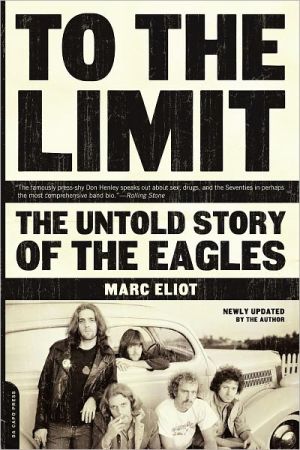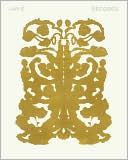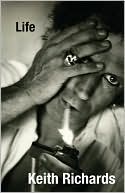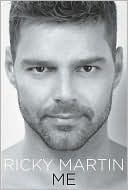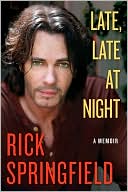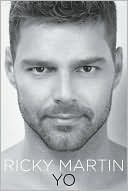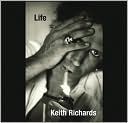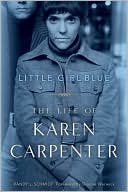To the Limit: The Untold Story of the Eagles
The Eagles are the most popular, enduring rock band in America. With singles and albums hitting the top of the charts for a quarter century and a greatest hits collection that has sold more copies than any other recording in history, the Eagles have entered the pantheon of pop music. To the Limit is the unauthorized account of the group from its earliest years through the breakup, solo careers, and reunions.Blending the country and folk music of the late sixties with the melodic seductiveness...
Search in google:
For the first time in paperback, and fully updated-the definitive history of the most popular rock-and-roll band of all time, the Eagles. Library Journal An unauthorized account of the Seventies group from a biographer who has ranged from Disney to Phil Ochs.
\ \ \ \ Chapter One\ THE ROOTS OF THE AVOCADO MAFIA As American rock and roll staggered toward the end of the sixties, a festival took place on an upstate New York farm to celebrate "Three Days of Peace and Love." Despite the enormous and well- organized hype, Woodstock, as it became known, was in reality less a commemoration of a decade's musical, social, and political achievements than a memorial to what Lionel Trilling would later deplore as the sixties' personality-peculiar "cult of sincerity."\ Although festivals remained part of rock's annual summer rituals, nothing quite like Woodstock ever took place again, as the last vestige of hippie flower power washed away during those three days of peace, love, and torrential rain. Most of the seminal acts of the decade, sensing disaster, did not even bother to make an appearance, including a by-now reclusive Bob Dylan, the endgame Beatles, and the strung-out Rolling Stones. Of those who did, almost none carried any musical or cultural influence into the next year, let alone the next decade. The biggest- name performer, Jimi Hendrix, passed away not long after (as did Janis Joplin, who was there, and Jim Morrison, who wasn't), putting an especially bitter coda on the dead-end destiny of the so-called psychedelic sixties.\ The single previously heard but still unseen act that emerged triumphant from Woodstock was Crosby, Stills and Nash, joined onstage by Neil Young. Taking their turn at four in the morning, they sat themselves down on stools, reached for their guitars, performed their uniquely structured, lyrically sophisticated, harmonically vivid "Suite: Judy Blue Eyes," and at ageneration's wake became superstars.\ The deliberately dressed-down four had come together during the last years of the sixties, in the legendary clubs along Los Angeles's Sunset Strip, sharpening a sound part folk, part rock, part country, part blues. And all white. It was an amalgam of music at once familiar and surprising, the legacy of the best and brightest of the New York early sixties club scene and the British Invasion, most of the survivors having long since headed west. By the middle of the decade, such former Greenwich Village performers as the Mamas and the Papas, the Byrds, John Sebastian, Tim Hardin, David Crosby, David Blue, and Joni Mitchell had all landed on the night side of Sunset to play a hand in reviving and reenergizing what they still called rock and roll. By combining the fifties- based doo-wop harmonies of L.A.'s Beach Boys with the bouncing rhythms of Liverpool's Beatles, and mixing in a little Nashville-style country to dress the sound in blue-jean blues, dozens of new West Coast groups had flourished. The Byrds, Buffalo Springfield, and the Hollies, three of the Strip's most popular and influential bands, eventually resolved into Crosby (Byrds), Stills (Springfield) and Nash (Hollies), and occasionally Young (Springfield). Having first perfected its act on record, the group then came to Woodstock to stake its claim on the seventies.\ Crosby, Stills and Nash's festival success established them with authority. They quickly assumed the position of godfathers of the "new" L.A. sound, the group everyone most respected and wished to emulate. As it turned out, while they pointed the way, C, S and N would not remain atop the rock pile for long. Although they managed to survive through the years in one configuration or another, personal demons, stylistic conflicts, and an idealism too heavily rooted in politics and pot ultimately narrowed their audience and flattened their impact. In retrospect, they were the last great group of the sixties rather than the first great one of the seventies.\ Nevertheless, the trail they blazed became rock's latest superhighway. When the next crop of young hopefuls raised their heads in the direction of the music, they too would inevitably look to the West. Indeed, by 1971, L.A. was the unchallenged new mecca of American rock and roll. Like the prospectors of the California gold rush a hundred years earlier, most hopefuls would soon return home in disappointment, their vein of gold records unrecorded. Some would stay a while longer before giving up, and a few would actually get to spend fifteen minutes playing out their fevered dreams.\ Fewer still would find glory. Four who did were Don Henley from Texas, Glenn Frey from Michigan, Randy Meisner from Nebraska, and Bernie Leadon from Minnesota. Each came to L.A. not knowing the others, or the city, or the world they wanted so much to be a part of. Each set out simply to make good music, and did, until the day they found themselves onstage together and realized for the first time their combined potential for greatness. Reborn as the Eagles, Henley, Frey, Meisner, and Leadon changed rock and roll again forever.\ Their music dominated the seventies and displaced the previous pop-culture power clique of L.A.'s clean-cut, blue-eyed, soulful singer-songwriters. Under the shrewd guidance of David Geffen, the same youthful manager-on-the-make who'd orchestrated Crosby, Stills and Nash's rise to superstardom, the Eagles became point men along the Strip for what was called, variously, the Mellow Mafia, the Southern California Mafia, and the Avocado Mafia, a seventies version of Frank Sinatra's fifties Hollywood Rat Pack. They would be idolized and idealized by the children of the seventies for cutting the self-indulgent psychedelic excess from their big brothers and sisters' music. Taking a vocal cue from the harmony- rich, romantically hip, acoustically countrylike sound of Crosby, Stills and Nash, the Eagles bypassed the more strident echoes of the sixties simply by ignoring them. Instead, in their various incarnations, they reinvigorated rock and roll with pop-heavy doses of rhythm and blues ("Heartache Tonight"), bluegrass ("Twenty-One"), gospel ("The Last Resort"), Motown ("One of These Nights"), surf ("Take It Easy"), reggae ("Hotel California"?listen to it again), blue-eyed soul ("I Can't Tell You Why"), Top 40 ("Witchy Woman"), romantic ballads ("Best of My Love"), classic teenage pop-rock tunes ("New Kid in Town"), bar-band rock ("Chug All Night"), epic album cuts ("The Sad Caf?"), FM-friendly rock ("Nightingale"), and oh yes, country-rock ("Desperado"). By doing so, they became the quintessential American band, their original configuration (Detroit street-kid, Southern moralist, Midwestern barfly, and country-western banjo player) an apt metaphor for the seventies generational hopes and dreams of a creatively integrated America.\ Even so, the songs of the Eagles sound-tracked a time that refused to long nostalgically for the fervor, action, and relevance of the decade just ended. Rather, they reflected the emerging musical style of a seventies postwar America that looked forward to growing up in actual as opposed to imagined peacetime and a better way of living with, if not completely in, the mainstream. To that end, the first truly sexually liberated generation, coming of age in the relatively brief, gloriously guilt-free period of anything goes after the Pill and before AIDS, had no trouble identifying with a band that sang like angels and partied like devils.\ Throughout their career, the Eagles rode high with privilege down rock's treacherous fast lane. When the first end finally came, perhaps fittingly at the close of the seventies, they were, perhaps understandably, emotionally road- weary from their increasingly dark journey. It would take fourteen years for Henley and Frey to come into the morning light of their own day-after nineties and reconcile their personal differences. Once they did, they invited their flock to share in the celebration, and for however brief the moment, the world again belonged to them.\ In the nineties, the music of the Eagles returned to the charts and minds of the now grown-up children of the seventies, its rebel yell having become more anthemic than moral. Still, even as it remained the best sound track of a collective flight of a generation's youthful fancy, for the Eagles, it all too quickly became the same old story. For what had first made them so great was also what had always driven them so crazy, from their first downshift in the speed zone to the final gassy rev down memory lane. Inevitably, it seemed, no matter how fast they drove, they could never quite lose the reflection that tailed them in the rearview: the image of their own heated youth, already exhausted by their high-speed, chrome-dipped, supercharged, and eternally conflicted souls.
\ Library JournalAn unauthorized account of the Seventies group from a biographer who has ranged from Disney to Phil Ochs.\ \ \ \ \ Library JournalConsidering Eliot's previous controversial biographies, including Walt Disney: Hollywood's Dark Prince (LJ 5/1/93) and Down Thunder Road: The Making of Bruce Springsteen (LJ 8/92), it's not surprising that ex-Eagle Don Henley tried to halt publication of this well-researched study of America's biggest band of the 1970s. The artist and the author eventually reached a truce, with the reticent Henley sitting for interviews, and this may explain why some unsavory details (such as Henley's 1980 drug bust) are lightly glossed over. Eliot gives little insight into what made the band tick, but he does provide an excellent contextualization of the early 1970s L.A. rock scene, and he offers fascinating character studies of Eagle compadres Jackson Browne, Linda Ronstadt, and J.D. Souther, as well as music biz barons David Geffen and Irving Azoff. The generous appendix includes extensive notes and a detailed discography. Recommended for popular music collections. [Previewed in Prepub Alert, LJ 5/15/98.]--Lloyd Jansen, Stockton-San Joaquin Cty. P.L., CA\ \ \ Kirkus ReviewsA comprehensive, sternly opinionated chronicle of the band that embodied with fabulous commercial success the sensibility of Los Angeles in the 1970s. Eliot (Walt Disney, 1993, etc.) interviewed ex-Eagles as well as many friends and business associates, and with resigned distaste these sources attest to the pile-up of personal conflicts, pharmaceutical excess, and cutthroat business shenanigans that gradually took shape beneath the bandþs lilting parade of hits until, on their 1976 concept album, Hotel California, they nakedly trumpeted their bitter, burnt-out, coked-up disillusionment itself as their aesthetic driving force. The four original Eagles converged on L.A. from the Midwest and Texas in the late 60s, struggling until they came together to back up Linda Ronstadt. Eliot gives a sharp overview of how the Eagles, Ronstadt, and Jackson Browne struck gold via Asylum Records founder David Geffen. The Eagles were, Eliot contends, as much a business proposition by Geffen as a musical venture. Singer/drummer Don Henley concurs: "Money was a much saner goal than adoration [I]f I'm gonna blow my brains out for five years, I want something to show for it." Geffen, scary mogul Irving Azoff, and Henley all provide alarming insights here into how the music business operates. The band roster changed several times, but the members became progressively more popular—their greatest-hits collection is one of the two top-selling albums of all time—until melodramatic squabbles among all the members, but especially between Henley and co-leader Glenn Frey, dissolved the band in 1980. While Eliot's a fan, his judgments on individual songs and events are often acerbic. Withthe Eagles now middle-aged and detoxed, their recent reunion tour, he writes, "was like watching a nineties production of Beatlemania performed by the Beatles themselves." If you can take the pervasive atmosphere of cynical, calculating hedonism—that is, if you're an Eagles fan—you couldn't ask for a truer portrait.\ \
